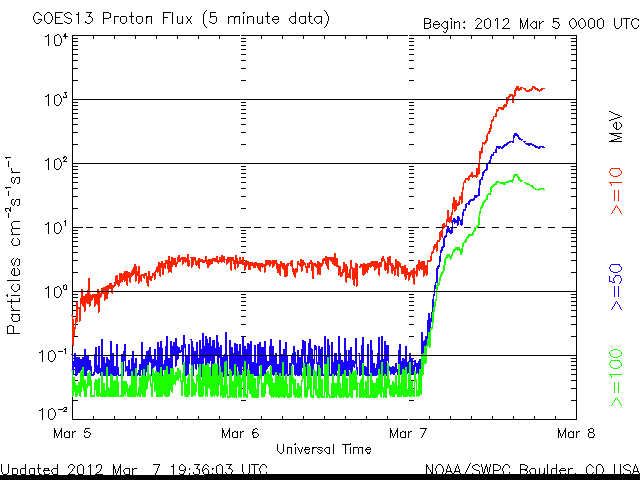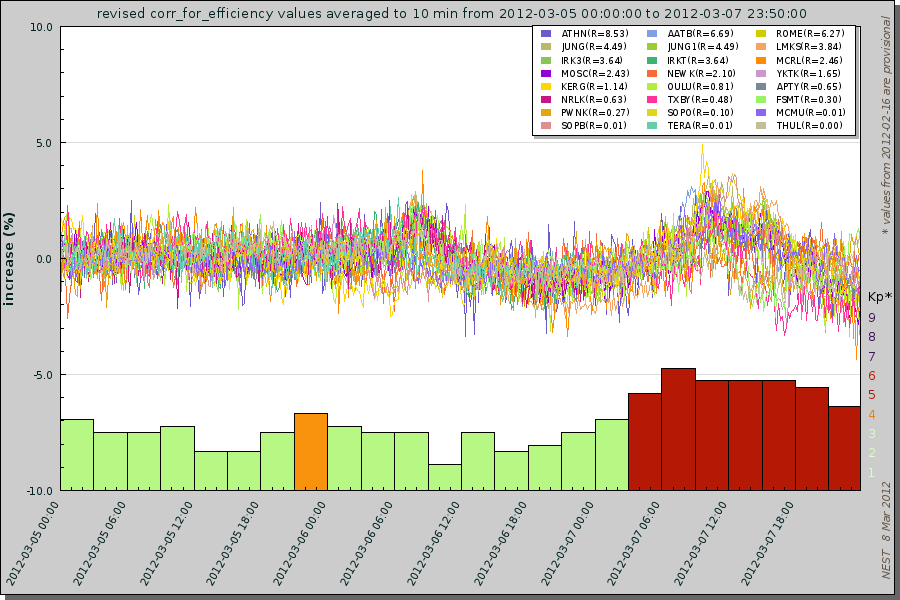|
Solar flares of 7th March 2012 and associated solar energetic particles (SEPs) On 7th March, starting 00:02 and 01:05, NOAA (http://www.solarmonitor.org/) reported two strong flares (respectively, X5.4 and X1.3, from active region 11429 (N18 E31), followed by a number of smaller flares. The activity was accompanied by a broad CME that SoHO/LASCO observed in the north-eastern quadrant. Its main outward displacement was directed north-eastward, but it also expanded westward in position angle, reaching the solar equartorial plane. A relatively slow rise of energetic proton intensities was observed by the GOES spacecraft, extending to energies above 100 MeV (see first Figure). Its maximum was attained near 15 UT on 7th March, about simultaneously at all energies. The peak intensity for protons above 10 MeV was about 2000 pfu. This is still well below the level of the event on January 24th. But the very strong intensity increase in proton channels above 100 MeV shows a much more pronounced high-energy component. Besides, the parent activity is on the eastern hemisphere of the Sun and therefore may have a poorer magnetic connection to Earth. The proton intensity rose in several steps, suggesting several successive solar proton releases. Some neutron monitors display an enhanced count rate that peaks near the GOES SEP event (second Figure). However, this increase occurs at a time of a major perturbation of the geomagnetic field (cf. Kp index), likely generated by a solar event launched on 5th March 02:03 UT. The enhanced neutron monitor count rate is probably not the first GLE of the 24 th cycle.  The SEP event of 2012 March 07 observed by GOES (NOAA)  Relativistic protons (galactic cosmic rays) measured by the NMDB network(nest.nmdb.eu), together with the 3 hr averaged Kp index | |






